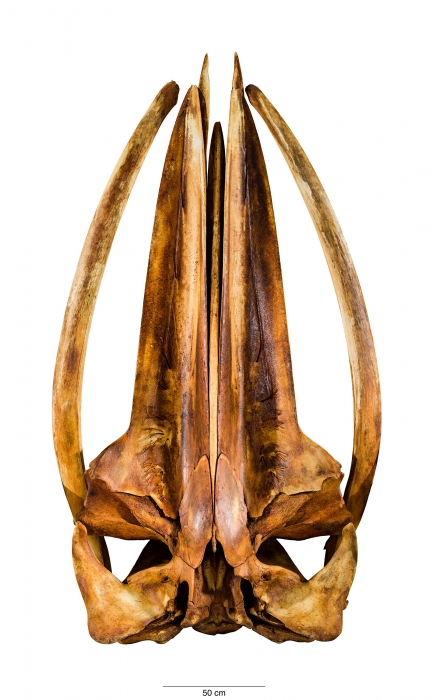The skull of the Rice’s whale skeleton that scientists studied and described to officially designate it as a new species of whale. In the field of biology, scientific recognition of a new species requires what is known as a holotype or type specimen. A holotype is a single specimen that is designated as the official representative of a new species for the entire scientific community.
The Smithsonian’s National Museum of Natural History is the steward of the Rice’s whale holotype for the scientific community. This ensures the specimen’s preservation and accessibility for research in perpetuity.
Museum staff and researchers are working to expand scientists’ limited knowledge of the species by studying the chemical makeup of its baleen and by investigating its evolutionary relationships to other whales.
The museum will host a scientific symposium focused on the recently identified and endangered Rice’s whale, commemorating the 50th anniversary of the Endangered Species Act and other large whale conservation efforts.
The symposium—to be held Thursday, Nov. 16, in partnership with NOAA Fisheries and the Marine Mammal Commission—features experts from the marine mammal research, conservation and management communities.




